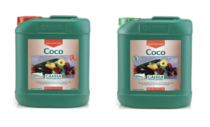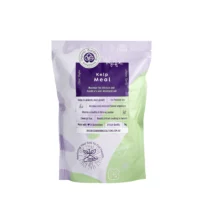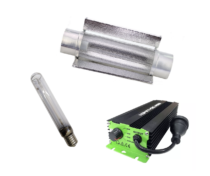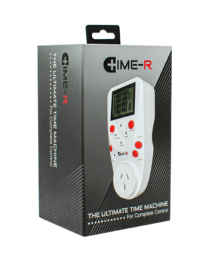Hydroponic systems
The first step for a beginning grower is selecting a hydroponic system. While there are many different hydroponic systems available on the market, they can generally be broken into two categories.
1) recycling or recirculating systems and
2) run-to-waste systems.
To learn more about the different types of hydroponic systems, see Hydroponic Growing Systems: A Guide.
How often should I feed my plants?
The amount of nutrient solution to feed is perhaps even more important than how and when to feed. Only feed the plants during the day period (while the lights are on). Do not overfeed plants as this will slow growth and can create perfect conditions for pests and diseases. See our post How Often Should I Feed my Plants to learn more.
- How often should I feed in perlite? As a general rule, feed 10-15% more nutrient solution than the pot/container will hold. Frequency of application depends on plant size and room temperature but will vary from once or twice daily immediately after transplanting, to several times per day on warm days during harvest.
- How often should I feed in clay balls? As a general rule, feed 10-15% more nutrient solution than the pot/container will hold. Frequency of application depends on plant size and grow room temperature but will vary from: One 15-minute feed per hour while the lights are on during the first weeks of growth, to one 15-minute feed every two hours starting several minutes before the lamps have been turned on.
- How often should I feed in coco coir? When using a pot over 30 litres, feed once per 24 hours until the plant reaches 30cm wide/high. Then feed twice per 24 hours until the plant reaches 50cm wide/high before feeding the maximum of three times every 24 hours. 20% runoff is a good amount. Wait a few minutes to determine runoff amount because the coco acts like a sponge. If the pots are smaller than 30Ltr then it may be necessary to feed up to 5 times per day. A good tip is to feel the weight of the pot. If it is heavy do not feed until the pot has dried out a little. If using Rocket Pots, then extra feeds may be required as they dry out quicker than standard pots.
Nutrients
Choosing the right nutrients is essential for healthy plant growth, high yields, and maximum terpene production. At Glandore Hydroponics, we only sell the highest quality nutrients. We personally prefer Dutch brands such as BAC or Canna. There are several factors that will influence the type of nutrients that you use, including:
- Growing medium (see Hydroponic Growing Media for more info)
- Environment (indoors or outdoors, hydroponic system etc.)
- Size (the size of plant you are intending to grow)
- Variety (the strain or species of plant)
To learn more about nutrients see our post Choosing the Right Nutrients.
Nutrient Solution Temperature
A crucial, yet often overlooked factor in hydroponic environmental control is the temperature of the nutrient solution. The temperature of the nutrient solution impacts the amount of oxygen that can be transported to the roots. Cooler water is able to retain more oxygen, while warmer water retains less oxygen. The optimum water temperature range is 18-22°c. The ideal temperature is 20°c. At 25°c water can hold 5ppm of oxygen. At 20°c water can hold 8 ppm of oxygen. Check out our post Regulating Nutrient Solution Temperature to learn more.
Aerating the Nutrient Solution
Aerating the nutrient solution is a crucial process in hydroponic and aquaponic systems to ensure optimal plant growth and overall system health. Proper aeration offers several key benefits:
- Enhanced Oxygen Availability
- Improved Nutrient Distribution
- Prevention of Algae Growth
- Enhanced Beneficial Microbial Activity
- Reduction of Plant Stress
Air pumps and stones can be used to effectively aerate your nutrient solution. Checkout out our post Aerating the Nutrient Solution to learn more.
Organics
There are two main types of nutrients: organic and mineral. The fundamental difference between them, is origin. Each type is formulated in its own way and offers its own unique advantages. Key Benefits of organic formulations include:
- Adds more organic matter to your substrate making it healthier and more fertile
- Increases microbial activity in soil
- Produces humic and amino acids
- Increases resistance to disease and pests
- They remain active for longer
- Little to no nutrient leaching
- No risk of root damage or burning
- Reduced environmental impact
- Improved flavour and aroma
For a more in depth look at organics, see our post Organic Inputs in Hydroponics.
Additives
Good quality base nutrients provide a solid foundation for plant nutrition. However, many growers choose to use additives to build upon that foundation. Additives can offer precision growth enhancement or manipulation with profound results. Different types of additives include:
Checkout our post All About Additives to learn more.
PGRs
PGRs, or plant growth regulators, are synthesised chemicals that mimic the natural hormones of plants. PGRs can promote certain characteristics by triggering physiological responses. They are normally used to promote larger, denser flowers and shorter, stockier plants. There are also natural or organic PGRs which provide plants with an additional supply of auxins and cytokinins. Examples of natural PGRs include seaweed, kelp extract, bat guano extract and alfalfa extract found in products such as BAC Organic PK Booster, NTS Tri-Kelp, and Nature’s Own Super Bloom Guano. (See A Guide to PGRs in the Grow Room and Plant Hormones 101 to learn more).
Medium
Selecting the right growing medium is an important decision when growing plants indoors, as it can affect the plant’s growth, yield, and even its flavor and aroma. The choice of growing medium will depend on your growing style, budget, and personal preferences. Popular grow mediums include soil, coco, rockwool and clay balls. To learn more about different grow media see Hydroponic Growing Media.
What pH should I maintain?
Maintaining the correct pH in the growing medium and nutrient solution is crucial as it affects nutrient availability and absorption, plant growth and development, and overall crop yield and quality. A pH that is too high or too low can lead to nutrient deficiencies or toxicities, stunted growth, and other plant health issues. Thus, regular monitoring and adjustment of pH levels is necessary.
- Recirculating: 6.0 – 6.6
- Run-to-waste: 5.5 – 5.8
Use a pH pen, digital waterproof pH meter, or even a simple pH test kit to measure pH levels. You may also need pH(up) and pH(down) to adjust the pH of the nutrient solution.
During the last three weeks of the flower stage, run your pH at 6.2 – 6.8. This will make P/K more available to the plants. Our favourite PK products are Frooting Power and BAC F1 Extreme Booster. See our posts Why Does pH Matter? And Optimal pH Levels in Hydroponics for more information.
EC or Electrical Conductivity
Electrical Conductivity or EC is the means used for testing the levels of minerals in a nutrient solution. Measuring and adjusting the EC of your nutrient solution is essential to ensure your plants are not being over or under-fed. Requirements depend on the growth phase, the time of year and the brand of nutrients.
A Bluelab truncheon or a simple EC pen is a suitable tool for measuring EC. If the EC is too low – add more nutrient. If the EC is too high – add more water. Below is a guide on nutrient strengths. If unsure, use less nutrients.
EC Guide for media such as perlite and expanded clay balls
- Vegetative: 840 PPM – 1540 PPM | 1.2-2.2 EC
- Flowering: 1260 PPM – 1680 PPM | 1.8- 2.4 EC
EC guide for media such as coconut coir
- Vegetative: 840 PPM – 1400 PPM | 1.2-2.0 EC
- Flowering: 1260 PPM – 1540 PPM | 1.8- 2.2 EC
Lighting
Choosing the right lighting system is crucial for ensuring healthy growth and high yields.
Different types of lighting include LED, High Pressure Sodium (HPS), Fluorescent, Metal Halide and UV. When selecting a grow light, consider the size of your grow space and the number of plants you’ll be growing. Make sure to select a light that provides adequate coverage for your plants, and adjust the height and intensity of the light as needed during different stages of growth. See A Guide to Hydroponic Lighting and LED vs HID to learn more.
How long should I run my lights?
- Vegetative phase = 18 hrs per day.
- Flowering phase = 12 hrs per day.
Timers can be used to automate lighting to ensure your plants are receiving the exact amount of light required at different stages.
Ventilation
Terpenes are naturally occurring aromatic compounds found in plants, herbs and some animals. Terpenes are being studied for their potential therapeutic benefits, including anti-inflammatory, anti-anxiety, and anti-depressant properties. They are responsible for the distinct aroma and flavor of different strains and can also play a significant role in the effects of the strain. Terpenes are thought to work in synergy with cannabinoids produce a wide range of effects. Overall, terpenes play a crucial role in the complexity and diversity of different strains, and their importance cannot be overstated. To learn more about terpenes and growing terpene rich plants, check out our articles What are Terpenes? and Growing Terpene Rich Plants.
Proper ventilation is a crucial component of a successful grow room because it helps to maintain ideal temperature, humidity, and CO2 levels, which are essential for healthy plant growth and development. Ventilation also helps to prevent the build-up of stagnant air and harmful gases, such as carbon dioxide and ethylene, that can damage or kill plants. Additionally, good ventilation can help to control odors, reduce the risk of pests and diseases, and improve overall air quality for both the plants and growers. Generally, it is preferable to have too much ventilation than not enough. Check out Ventilation in the Grow Room to learn more.
Temperature
Different stages of growth require different temperature ranges to optimize plant growth. Controlling and monitoring temperature is important for achieving maximum yields and potency. High temperatures can lead to plant stress, wilting, and reduced yields, while low temperatures can slow down growth, increase the risk of pests and diseases. Additionally, temperature plays a critical role in controlling humidity and CO2 levels in the grow room.
- Recommended day temp is 26 – 28 °C
- Recommended night temp is 20 – 23°C
Try to minimise the swing between night and day temperatures. Use a thermometer to record temps/swings. A thermostat is also a useful tool for controlling temps. See Temps and Humidity: A Guide to learn more.
Humidity
Maintaining the correct humidity in your grow room is a critical element of successful indoor growing. If your room is too dry (low humidity) your plants will drink more which can lead to nutrient burn. Low humidity can also lead plants to become dehydrated which can stagnate growth and cause the stomata to close. Excessive humidity will reduce the plant’s ability to process CO2 and transpire. Avoid large swings in humidity. Plants prefer relatively stable environments.
- Clone: above 80%
- Grow stage: 60%-80%
- Bloom stage: 50%-60%
When humidity is too low, an evaporative cooler can increase humidity levels. When humidity is too high, consider extra ventilation or a dehumidifier. A hygrometer is a useful tool for measuring humidity. See Humidity in the Grow Room to learn more.
CO2
Plants use CO2 in photosynthesis. Without CO2 photosynthesis effectively ceases. By increasing the atmospheric levels of CO2 it is possible to increase the rate of photosynthesis. This means cell division (growth) occurs more rapidly; which means plant growth occurs more rapidly. CO2 can increase yields by 10 – 30% and reduce growing times by 10 – 30%. This means that if you are growing a crop with an 8-10 week growing cycle you could feasibly finish in as little as 6 weeks. In addition to this, yields could increase by 10 – 30%. See A Guide to CO2 in the Grow Room to learn more. To learn more about integrating CO2 in your grow room, see A Guide to CO2 in the Grow Room.
Reflective materials
Using reflective materials in the grow room can significantly enhance the overall efficiency and productivity of your grow space. Let’s break down the key reasons why you should consider incorporating reflective materials:
- Improved Light Distribution
- Efficient Light Usage
- Enhanced Light Intensity
- Reduced Hotspots
- Better Temperature Control
To learn more see Reflective Materials in the Grow Room.
Pests & Pathogens
Pests and pathogens are a common problem when growing all types of plants. They can cause significant damage, resulting in reduced yields and even plant death. Some of the most common pests and pathogens include spider mites, thrips, powdery mildew, and botrytis. It is crucial for growers to learn how to identify and prevent these issues, as prevention is always better than the cure. However, even with preventive measures in place, regular monitoring and prompt action are still necessary to keep your plants healthy. See Preventing, Treating & Identifying Pests & Pathogens to learn more.
Flushing
Flushing is an essential step in the cultivation process to ensure a high-quality end product. It involves removing excess nutrients and salts from the plant’s root system and growing medium, typically by running water through the medium. Flushing is important for several reasons:
- Improved taste and smoothness
- Reduced nutrient lockout
- Better bud quality
- Prevent nutrient burn
To learn more see Flushing Your Plants or check out our Feed Chart.
Pruning
Pruning your plants is a crucial part of the cultivation process that involves selectively removing parts of the plant to promote better growth, increase yield, and improve overall plant health. Pruning your pants can lead to:
- Increased yield
- Improved light penetration
- Better airflow
- Easier pest management
- Energy efficiency
Different pruning methods include topping, defoliation, finning, lollipopping. See Pruning you Plants to learn more.
Water filtration
Water quality plays a crucial role in a hydroponic growing system. When you have created the right environment, provided the right nutrition, and optimized everything else in the grow room, the rest comes down to water. Water quality varies significantly from suburb-to-suburb and city-to-city. Tap water can contain various contaminants including chlorine, fluoride, minerals, and bacteria. We recommend water filters with high grade carbon matrix filters or reverse osmosis filtration systems. See The Fundamentals of Water and Should I Filter my Water to learn more.
Trimming, Drying & Curing
Trimming, drying and curing is just as important as the growing process itself. Properly trimmed, dried and cured buds will have better flavor, aroma, and potency. To learn more about trimming see Trimming, Drying & Curing: The Basics and The Pros and Cons of Dry Trimming.

































